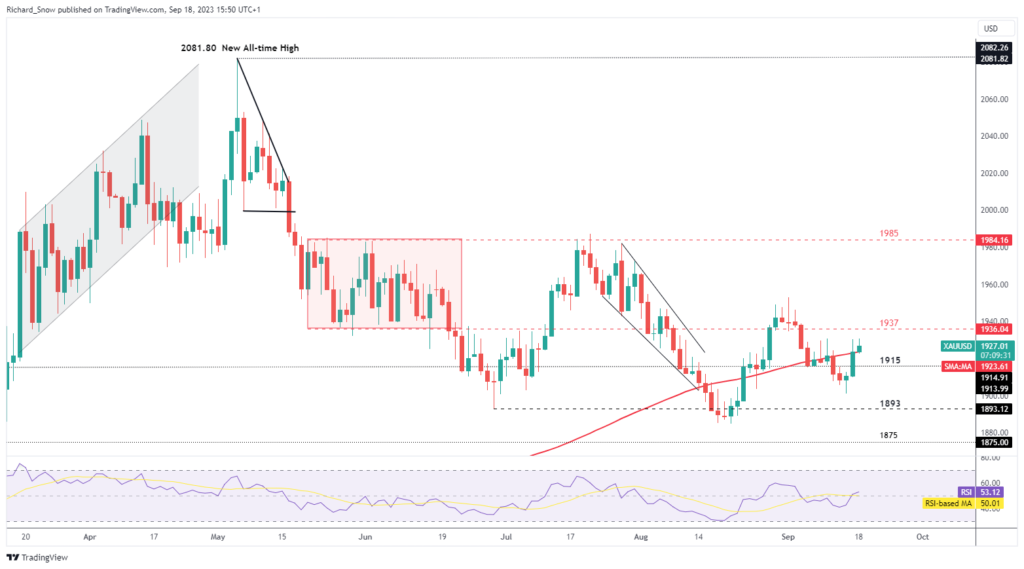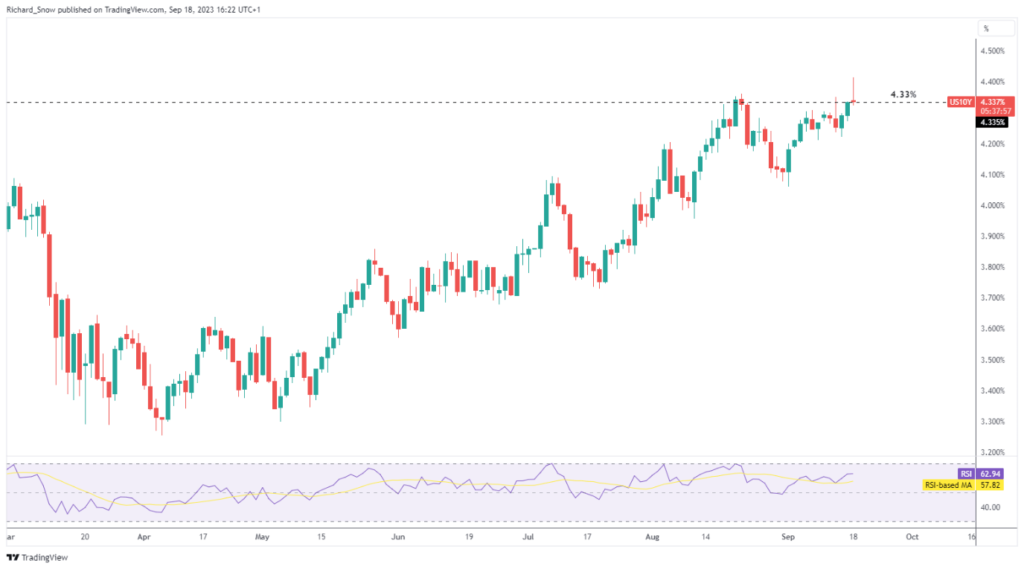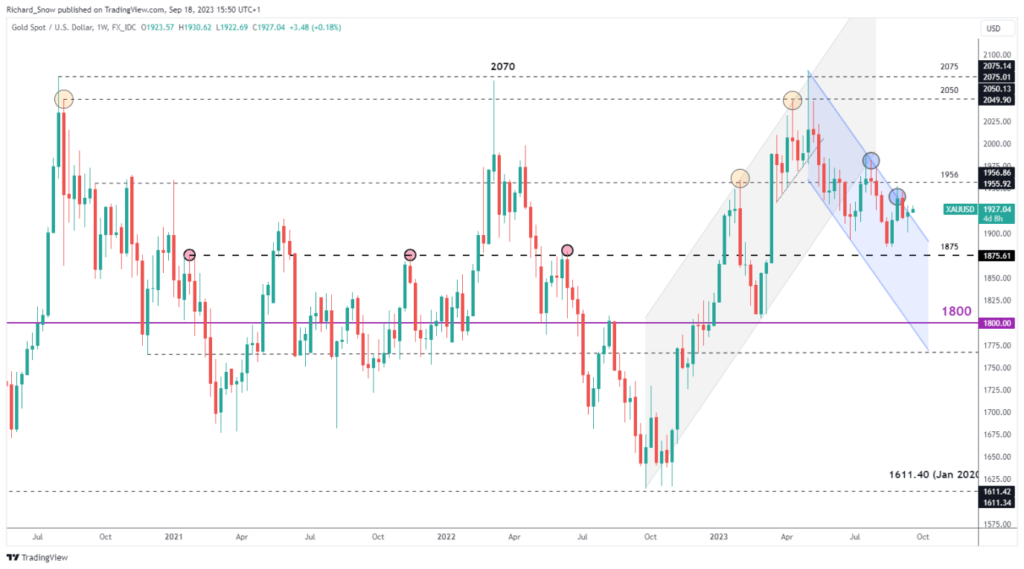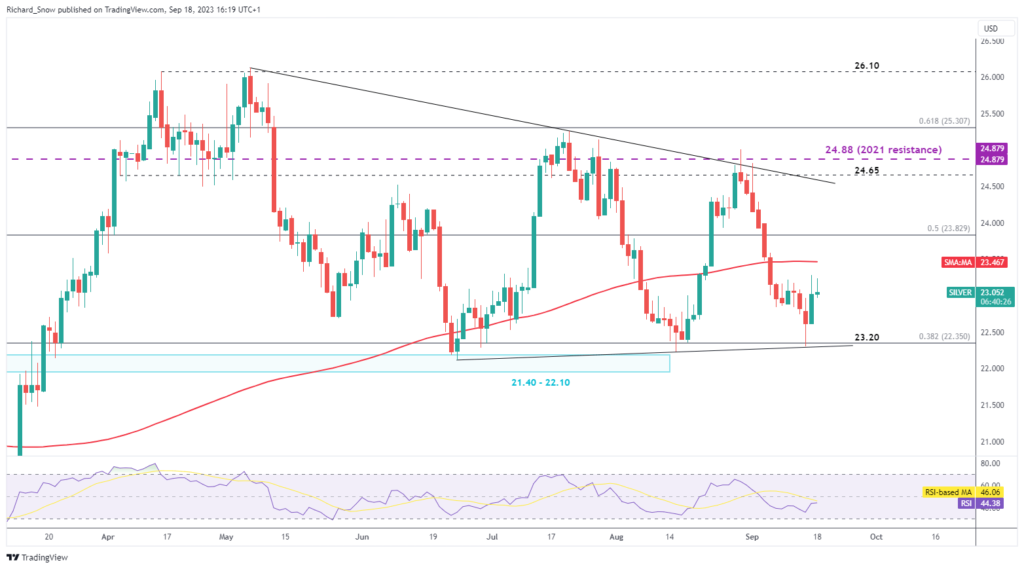Exploring Key Factors: Gold Prices Navigate a Complex Landscape as FOMC Decision Looms
Introduction
In today’s turbulent economic climate, gold prices are under the microscope. As financial markets hold their collective breath in anticipation of the Federal Open Market Committee (FOMC) meeting, gold remains a steadfast topic of discussion. With U.S. treasury yields showing increased volatility and inflation rearing its head once more, this precious metal has been inching up cautiously, touching key technical levels. Let’s unlock the potential drivers and intricacies that could set the stage for a dramatic shift in the world of gold investing.
The Current Landscape of Gold Prices
As we navigate through the first half of this week, gold prices navigate a complex landscape, showing subtle but promising signs of a possible upward surge. Traditionally viewed as a safe haven in uncertain times, gold is currently hovering around $1937 and faces a crucial level of immediate resistance that aligns closely with a significant trendline. A breakthrough in this area could potentially catapult gold into a bullish market, an event eagerly anticipated by investors. However, the focal point remains the upcoming FOMC rate decision and its quarterly forecasts, which bear the promise—or peril—of shedding light on pivotal factors such as economic growth, inflation rates, and interest rates.

Source: DFX
Deep Dive into the Role of the FOMC
The FOMC’s actions are not to be underestimated when it comes to their impact on gold prices. As things stand, market indications almost unanimously predict that interest rates will remain static. Such an outcome would give previous rate increases time to filter through the real economy, in line with the FOMC’s data-centric approach. Yet, the realm of finance is full of surprises. Any deviations from the expected script in the FOMC’s official statement or during their press conference could be the catalyst for a sudden, perhaps drastic, movement in gold prices.
Inflation: A Catalyst with Dual Consequences
Inflation often plays a Janus-faced role in the trajectory of gold prices. While a moderate level of inflation is traditionally viewed as a boon for gold—a tried-and-true hedge against rising prices—exorbitant inflation can trigger counteractive measures from central banks. Heightened interest rates could ensue, raising the opportunity cost of holding onto non-yielding assets like gold. The recent spikes in oil prices have tossed yet another wrench into the gears, escalating the inflationary narrative and potentially altering the FOMC’s tactical approach, not to mention its implications for gold.
Yield Curves and Their Weight on Gold
U.S. treasury yields, notably the 10-year note, have been exhibiting a slow but steady rise, a move generally construed as the tightening of monetary policy. This can serve as a counterbalance to gold’s potential ascent. With these yields continuing to hover at elevated levels, the bullish prospects for gold are contained unless offset by other market influences, such as geopolitical strife or drastic changes in inflation expectations.

Source: DFX
Decoding Technical Indicators
Gold’s technical indicators serve as reliable touchstones for traders. The 200-day simple moving average stands as a pivotal level. A sustained breakout above this mark could signify a bullish long-term trend. On the flip side, strong support looms at $1915, trailed by another support level at the swing low of $1901. These points should be carefully observed for potential investment entry or exit cues, especially when contextualized with other market dynamics like FOMC announcements or shifts in U.S. yields.

Source: DFX
Silver’s Parallel Universe
The silver market, often viewed as gold’s more volatile cousin, offers another angle to this complex tapestry. Silver, too, has shown resilience, bouncing back from a swing low around 23.20. The real test lies in its approach toward the 200-day moving average (DMA), a crucial technical threshold. As with gold, silver’s momentum may hinge on the FOMC decision, which could act as the catalyst needed to either propel prices or hold them in check. Therefore, keeping an eye on silver’s price dynamics in relation to its 200 DMA and other influential factors is essential for any diversified precious metals strategy.

Source: DFX
The Global Chessboard: Beyond the FOMC
While the FOMC reigns supreme in its influence over gold and silver prices, other global central banks are also key players. The Bank of England, for example, is poised for a 25-bps rate hike, according to market forecasts. Similarly, though the Bank of Japan is expected to maintain the status quo, any unexpected move could ripple across the global metals market, affecting both gold and silver prices.
Conclusion: Gold (and Silver) at a Crossroads
As the calendar inches closer to the FOMC’s crucial meeting, gold—and by extension, silver—find themselves at a critical juncture. From the intricacies of inflation to the dynamics of U.S. and global yields, multiple forces are converging to either unlock a bullish rampage or continue the containment of these precious metals within their current resistance levels. Regardless of the outcome, for traders and investors, awareness of these nuanced influences is indispensable for charting a course through the volatile landscape of gold and silver prices.
In a financial ecosystem teeming with variables, the need to unlock the secrets dictating the next moves in the gold and silver markets has never been more pressing. As the FOMC gears up to make its next announcement, now is the time to fine-tune your investment strategies and prepare for a world of possibilities.
Click here to read our latest article on Currency and Commodity Markets in Flux

